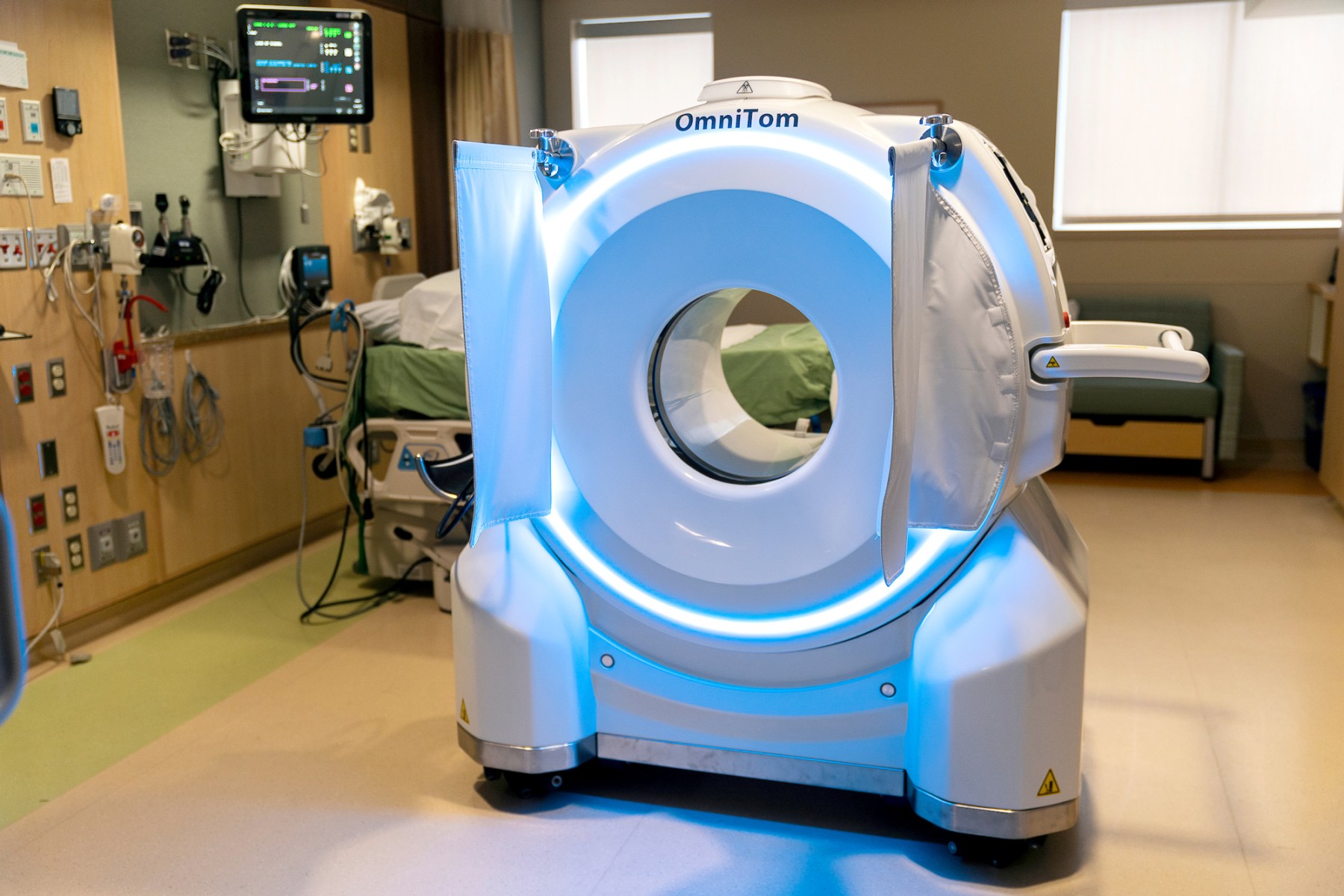What Is a Computed Tomography Scan?
Pediatric computed tomography (CT) scans use special X-ray equipment to take pictures of organs, bones, soft tissues and blood vessels. CT scans used to be called “CAT scans.” The pictures look like cross-sections or “slices” of the body. CT scans produce detailed pictures of the “slice” without other structures superimposed.
Who Benefits from a CT Scan?
A CT scan might help diagnose and treat kids who have:
- Brain injuries
- Hydrocephalus (fluid on the brain)
- Spina bifida
- Abnormal head shapes
- Arteriovenous malformations
- Birth brachial plexus injuries
- Complex movement disorders
- Chiari malformations
- Fractures
- Kidney stones
- Pseudo cysts
- Spinal cord injuries or spinal cord disorders, such as tethered spinal cord
- Ventricles in need of evaluation
At Gillette Children’s we perform a thorough low dose CT scan, exposing children to the smallest amount of radiation possible to minimize radiation risks.
We use protective aprons or shielding where possible to protect parts of the body that don’t need scanning. We take extra precautions for those who are pregnant, to protect against radiation.
Preparing for Your Visit
We ask parents and caregivers to help children understand they have to lie still for the CT scan—you can even practice lying still at home prior to your CT visit.
Additionally, all female patients at Gillette (12 years of age and older or who have started menstruating) will have a pregnancy test done prior to administration of the CT scan.
What to Expect During a CT Scan
A CT scanner looks like an upright inner tube or doughnut, with a long table that slides in and out of the center. Your child’s position inside the machine depends on the body part that needs to be imaged.
In some cases, you might be able to be near your child during the CT scan to hold their hand, talk to them, distract them with familiar stories. If your child’s procedure doesn’t offer this option, a two-way speaker allows communication between them and Gillette staff.
Because the equipment and process can be intimidating, we help kids relax by creating a soothing environment using the following approaches.
- Distractions: Child life specialists might offer distractions, such as sound and lighting features that help calm and relax your child during the CT scan. Child life specialists also offer music and video selections. Additionally, screens mounted on the ceiling can provide a distraction during the scan.
- Sedation services: We offer sedation services for cases when distractions aren’t enough to calm a child—or if your child’s disabilities, anxiety, pain or inability to remain still for long periods could interfere with the scan.
Your child will most often need to lie on their back during a CT scan. We have two 70-inch TV screens in the ceiling that play movies. Before the scan starts, your child can pick from movie themes designed to help your child reduce anxiety.
Getting Into Position
A CT technologist helps your child into position on the CT table. The technologist places a wide strap across their waist to help reduce movement during the test. After they’re in position, the table slides into the CT scanner. We control the machine from an area where we can see your child and communicate with a two-way speaker.
For some CT scans, we might give your child contrast dye by mouth or into a vein through an intravenous (IV) line. Contrast dyes help make specific organs, blood vessels or tissues “stand out” so radiologists can more easily see specific structures. If your child or loved one has had a past reaction to contrast dye, make sure to tell their doctors and the CT technologist.
Performing the Scan
The CT machine makes humming and clicking noises during the scan. Your child will need to stay still during the scan to make sure the technician gets clear pictures. At certain times, the radiologist might ask your child to hold their breath for a few seconds.
CT scans usually take 10 to 15 minutes to complete, depending on the body part that needs testing.
Respiratory Therapy
If your child needs respiratory support during the low radiation CT scan, the Gillette respiratory therapy team provides expert care to ensure the highest standards of safety.
After a CT Scan
After the CT scan has been performed, a specially trained pediatric radiologist interprets the CT scan. The test results are usually available in 48 hours, but if the results are urgent, we notify the referring provider as soon as possible. The referring provider discusses the final test results with you and your family.
Integrated Care
You can trust the experience of our technicians, who specialize in CT scans and other radiology and advanced imaging tests for children, teens and adults. Our radiologists and radiology practitioner assistants are familiar with the nerve, muscle and bone conditions that affect children most often.
Gillette is accredited by the American College of Radiology and collaborates with St. Paul Radiology to provide expert reading of pediatric imaging studies. St. Paul Radiology is nationally known for its specialized expertise in interpreting radiological studies of children.
Through every part of your child’s journey, we offer support and services to help make the process as comfortable as possible. Our facilities feature special lifts and equipment for kids who have disabilities, complex conditions and serious injuries. Additionally, we offer sedation services and techniques to calm and distract kids in a safe, family-centered environment.
 Home Page
Home Page




